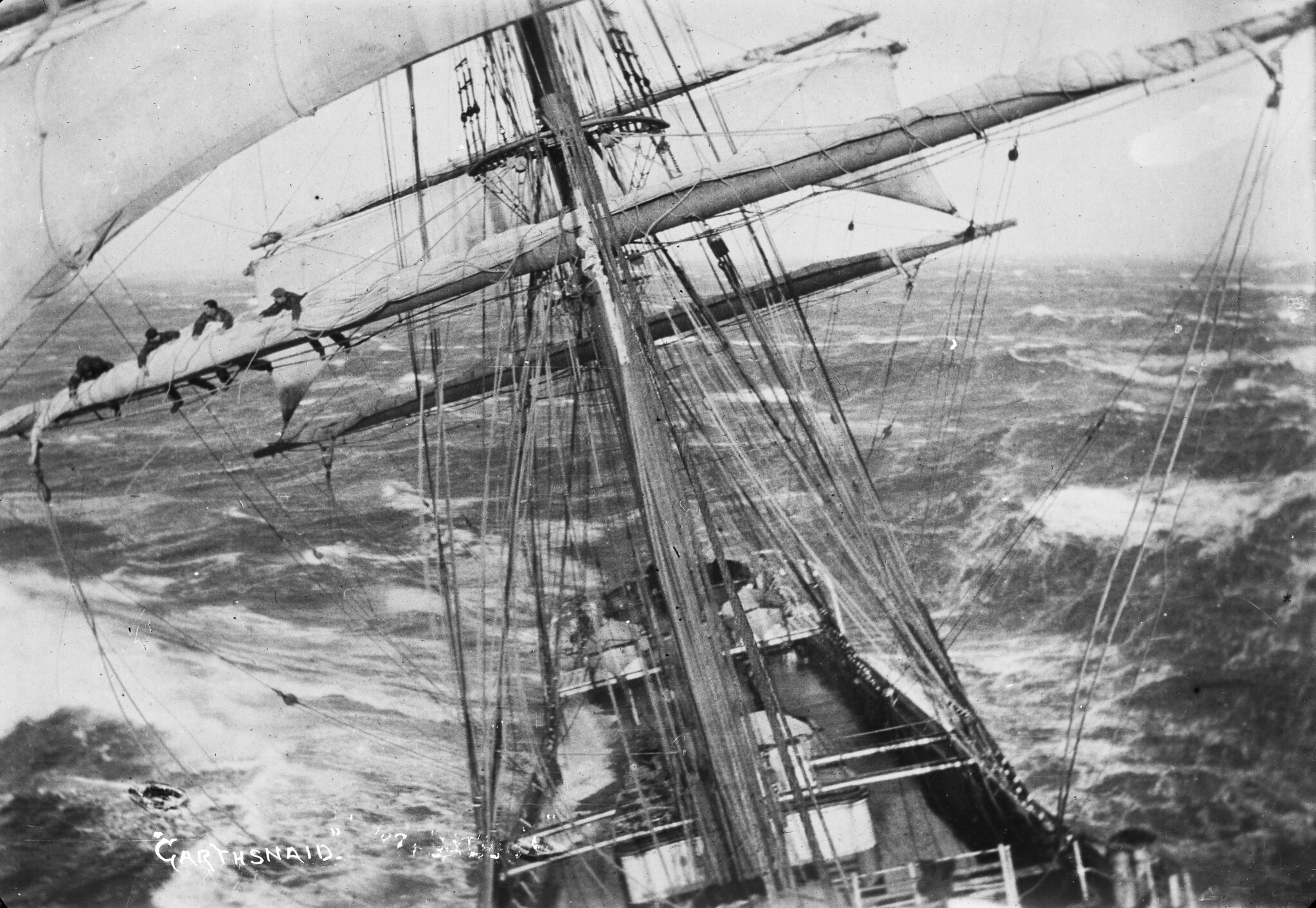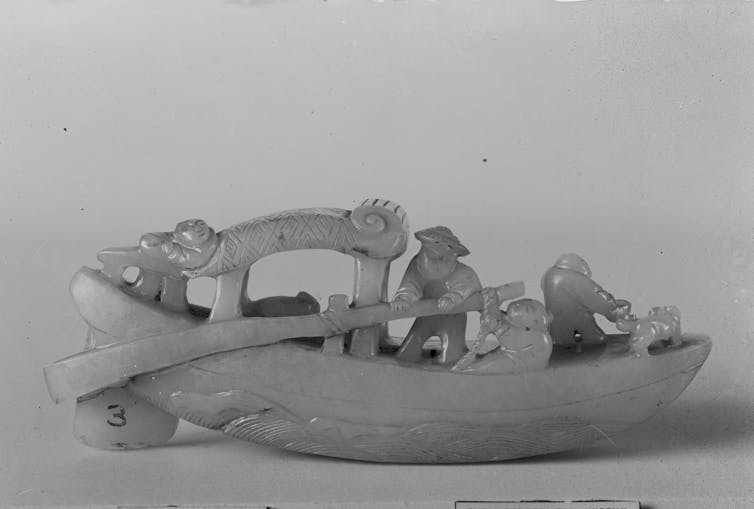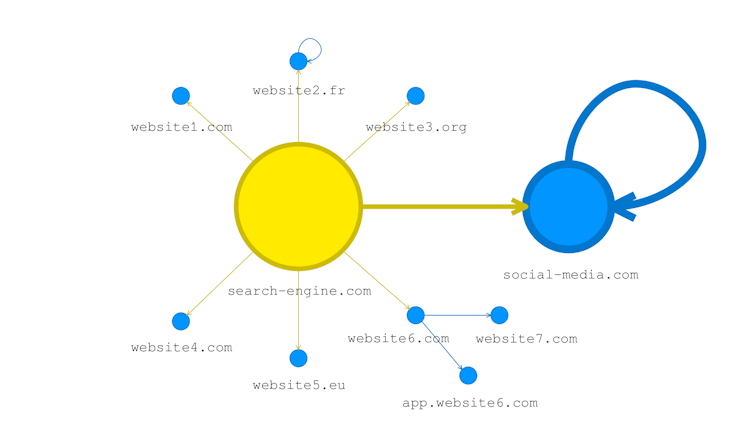New technologies to prevent post-operative hernias
Baptiste PILLET, Mines Saint-Etienne – Institut Mines-Télécom
The abdomen experiences intra-abdominal pressure, which varies according to the volume of organs, respiration, muscle activation and any physiological activity. As a consequence, the abdomen must resist forces exerted by this pressure, which can at times be high when coughing or vomiting, or during pregnancy. Certain illnesses such as obesity, paired with high intra-abdominal pressure, can lead to a hernia forming.
A hernia is when an organ, such as the small intestine, pushes through a natural opening, leaving its original cavity. It is a pathological protrusion, most often caused by weakness in the tissue that fails to resist the pressure from the organ. Factors such as obesity or repeatedly carrying heavy loads can increase this internal pressure, thereby making it more likely for the balance between tissue and organs to be disrupted.
It is a common condition, accounting for over 100,000 operations in France in 2020. If a hernia worsens, it can lead to bowel obstruction, which is why surgery is often preferred as a prophylaxis (preventively). Surgery involves reducing the protrusion and returning the intestine to its cavity.
Inguinal hernias are when the hernia is located just above the groin crease, whereas femoral hernias are located below the groin crease. Umbilical hernias occur near the navel, and lastly, epigastric hernias are located between the abdominal muscles, above the navel. In general, femoral hernias are more common in women and more complicated than inguinal hernias, which are more common in men. Umbilical hernias often occur after the umbilical orifice does not close correctly, and are therefore more common in infants.
Reducing hernias after abdominal surgery
After abdominal surgery, the resistance and mechanical behavior of the abdominal wall may be disrupted, which can lead to an incisional hernia (also known as an ‘eventration’). During a laparotomy (vertical incision of the abdomen), the linea alba (connective tissue between the rectus abdominis) presents areas of weakness after scarring over, which may later reopen. Such incisions of the abdomen may be necessary in around a hundred operations (organ transplant, cesarean section, etc.) and yet they lead to up to 11% of incisional hernias.
Although at present there is no means to detect and prevent abdominal hernias (natural or incisional), efforts have been made to reduce the rate of complications. From now on, in the majority of abdominal reconstructions (during a laparotomy or hernia repair), mesh is inserted between the various layers of muscle to strengthen the abdominal wall and therefore reduce the risk of recurrent hernia or eventration.
When such mesh is not used, the rate of recurrence is around 50%. Approximately 400,000 abdomen repairs using mesh take place each year in Europe, representing a cost of around €3.2 billion. This makes it one of the most common general surgeries, and yet, the rate of recurrence is still far too high (between 14 and 44%). Even 1% fewer recurrences would save €32 million a year.
The reinforcement mesh used has the purpose of strengthening areas of weakness during scarring and filling orifices to rebuild the abdominal wall. The surrounding biological tissue will then colonize the implant to return to a state close to the original. At present, the mesh is manufactured with resorbable or non-resorbable synthetic fibers, sometimes with derivatives from organic tissue (dermis or submucosa from human, porcine or bovine small intestine). It is characterized by the size of the pores, fiber diameter and thickness, etc. as well as mechanical characteristics, such as its resistance to stretching, bending, rupture, etc.
Better understanding recurrence
Mechanical tests and postoperative monitoring with imaging are taking place to understand the rate of recurrence, which remains too high. Often the mesh does not present the same mechanical behavior and therefore does not reproduce and adapt to that of the abdominal wall in the best way (mesh too rigid, for example). While the mechanical behavior of the mesh and abdominal wall has been relatively well studied in the literature, there remains a lack of understanding around the mesh’s integration in the abdomen environment. The initially implanted mesh will evolve in its behavior and effect on the abdominal wall over time as it integrates into the surrounding tissue. Moreover, it has been observed that the mesh has a tendency to contract or even deteriorate over time.
Digital models representing the abdomen and its repair are starting to be developed. Similarly, while more and more innovative research is appearing, there remains a lack of understanding around the high rate of recurrence, due to a shortage of data on these digital models. Specifically, there is no simulation that makes it possible to study and faithfully predict how the abdominal wall reopens, even when the mesh has been implanted.
With the aim of filling this knowledge gap, an animal study is underway to observe the role of mesh in reconstructing the abdominal wall following an incisional hernia.
The mechanical characteristics will be studied at multiple postoperative intervals through mechanical tests, and the integration of the mesh will be closely monitored thanks to medical imaging. At the same time, a digital model will be developed to represent the abdomen and its components (various layers of muscle, connective tissues, etc.) as accurately as possible.
The mechanical data will be then implemented into the model to analyze the mesh’s integration into its environment, as well as its effects over time. According to the placement of the textile, how it is attached and the physiological activity, it will be able to predict whether or not a reopening will occur, where it will arise and whether it will spread. This digital model could allow for better understanding of the abdominal wall mesh repair process and thereby improve implants, surgical techniques and consequently, treatment outcomes.
Baptiste Pillet, Lecturer-Researcher and Biomechanics PhD student, Mines Saint-Etienne – Institut Mines-Télécom
This article was republished from The Conversation under the Creative Commons license. Read the original article here (in French).






